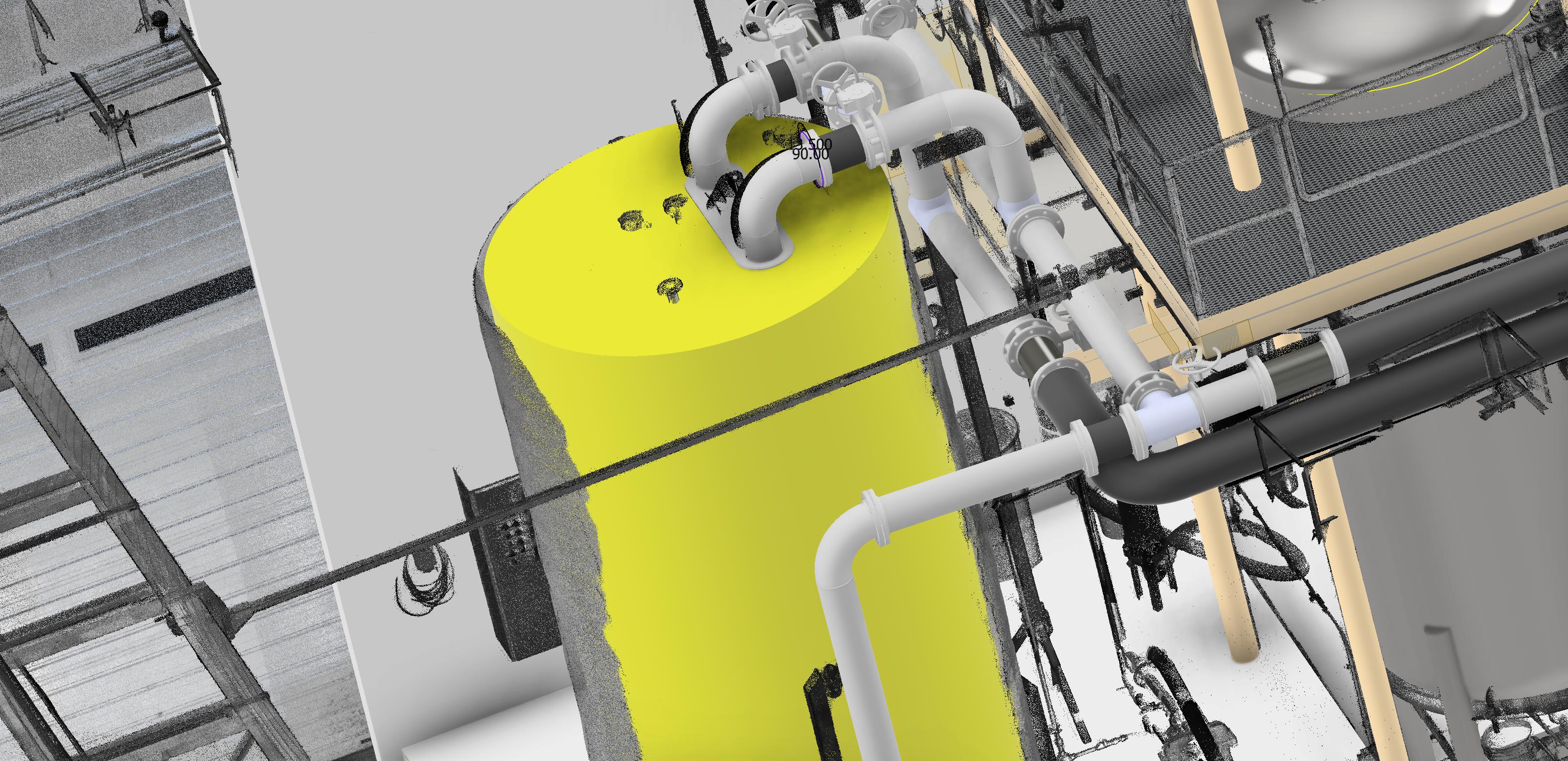The impact of 3D laser scanning on safety and efficiency in industrial fabrication
Industrial fabrication is an inherently dangerous field where injuries, physical damage and extensive repair times can bring construction and retrofit projects to a standstill. According to the U.S. Bureau of Labor Statistics, more than 16,000 workers are seriously hurt and 50 are killed every year in fabricated metal product manufacturing in the US alone. Safety isn't just a consideration in new projects — it's the primary focus, ensuring the wellbeing of workers and the seamless progression of projects.

Dauntless Industrial owner Alex Buchanan working on a flow switch. All images courtesy of Dauntless Industrial.
Prefabrication is essential to the future of the industrial construction industry, enhancing predictability, cost efficiency and safety. However, achieving these benefits requires surveyor-grade accuracy (~1cm) and a data-rich point cloud to ensure that prefabricated components will match the end environment precisely.
Using a 3D laser scanning system provides the quickest and most dependable method to verify prefabrication quality within the shop. By comparing captured point clouds directly to the model, scanning identifies any potential deviations from the plan, allowing fabricators to address issues before even leaving the shop. This level of accuracy guarantees that prefabrication is executed correctly, thus supporting the overall efficiency and safety of the construction process.
With connectivity to data-rich 3D immersive environments from virtually any location with a broadband internet connection, the industrial metaverse provides manufacturers with the opportunity to enhance their business both within and beyond the production environment of the smart factory.
Alex Buchanan, owner of Dauntless Industrial in Mesa, Arizona, US, founded his company with a mission to provide safer products and services for his customers. However, reducing risk in a notoriously hazardous industry is a significant challenge, and field measurements taken by hand often lack the crucial precision needed to get a project right the first time.
 3D scan of a gantry project
3D scan of a gantry project
Scanning ensures that fabrication through to final construction is accurate from the outset, minimizing rework, reducing wasted materials and preventing schedule delays. Scanning enables the Dauntless team to verify accuracy before arriving on site, because any errors in the shop have cascading effects: delaying installation, affecting subsequent tasks, and ultimately prolonging the project timeline while increasing costs. Errors can also lead to rushed work, resulting in compromised safety and quality.

Trimble X-series 3D laser scanner in the shop, above, and on a recent project in action, below

By including scanning, contractors can ensure precision, thus avoiding these downstream issues. Scanning not only provides answers to current questions but also addresses potential future uncertainties with accurate, contextualized data. As Buchanan said, with scanning: “re-work has become a thing of the past.”
Scanning improves construction safety by minimizing the need for personnel to be in hazardous and unstable environments to gather various measurements in difficult-to-access and unsafe areas throughout the site, keeping fabricators as much as possible in the relative safety to the fabrication shop. This technology allows for the collection of significantly more data, all from a secure location.

Stages of a process piping upgrade, starting with a scan and 3D model (above), and the finished project (below)

Buchanan found that Trimble X-series laser scanning technology combined with the Trimble software solved his issues. He said, “It takes measurements much faster. It takes measurements more accurately than a person ever could. It captures data that would otherwise be missed. It captures data that we didn't know we needed after the scope of a job is changed. It all allows our customers to accurately see renderings of their products in place in a video rendering.”
This level of precision is crucial for minimizing rework, maintaining project momentum and making data-driven decisions in real time. “With [Trimble] technology, our product is safer, faster, more accurate and more cost-effective,” Buchanan concluded.

3D scan for a cooling system update for a polyurethane manufacturing company

Header for the cooling system being installed into the break tank. Dauntless manufactured the header and installed.
Right from the outset, it provides a holistic dataset that empowers contractors to make informed decisions and ensure project success.
This approach:
- Reduces fabricator and contractor risk
- Enhances the overall quality of fabricated products, both in terms of weld precision and tolerances
- Allows customers during retrofits to maintain operations
- Permits installations during non-operational hours, further maximizing uptime
- Significantly speeds up the fabrication process
- Reduces the overall product cost
Trimble construction 3D laser scanning solutions provide accuracy, range and durability with easy-to-use software for control and review of scan data at the site, with innovative features like self-leveling and auto-calibration.